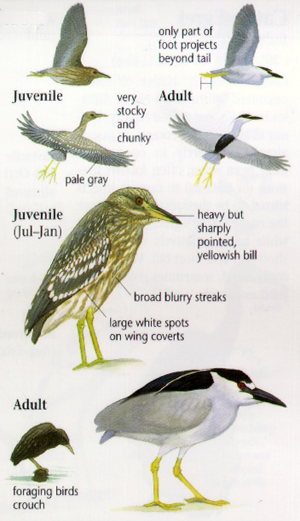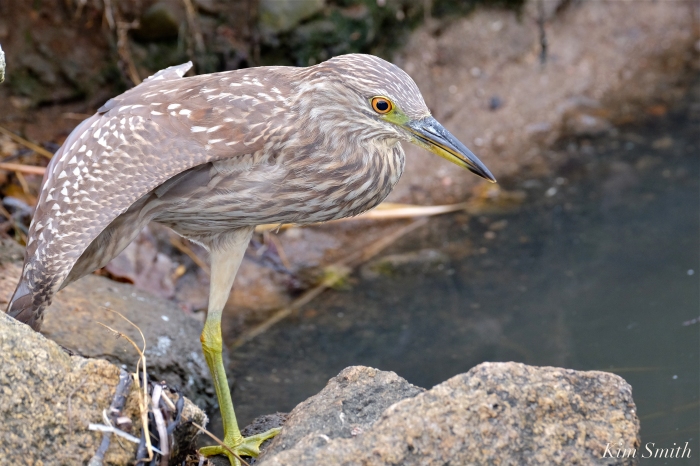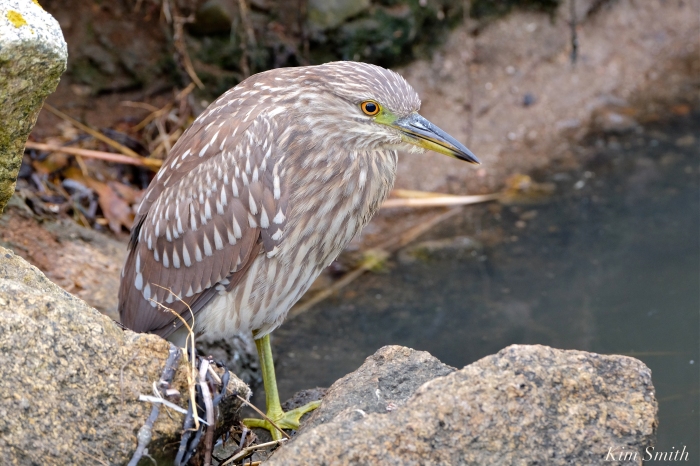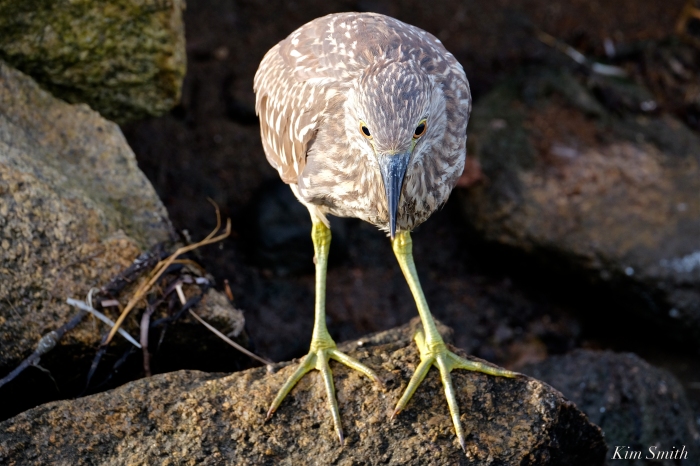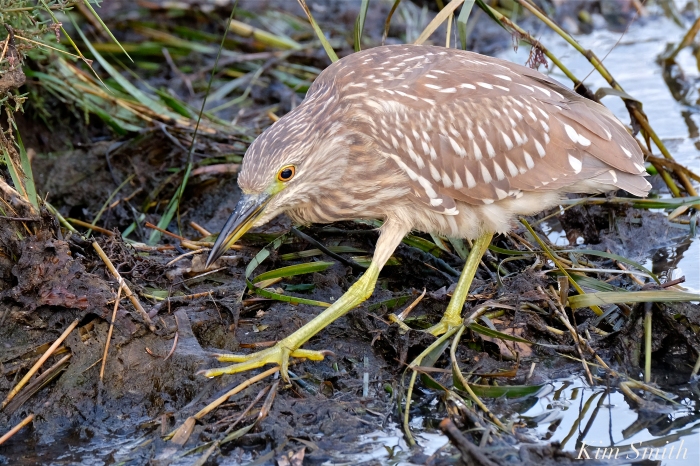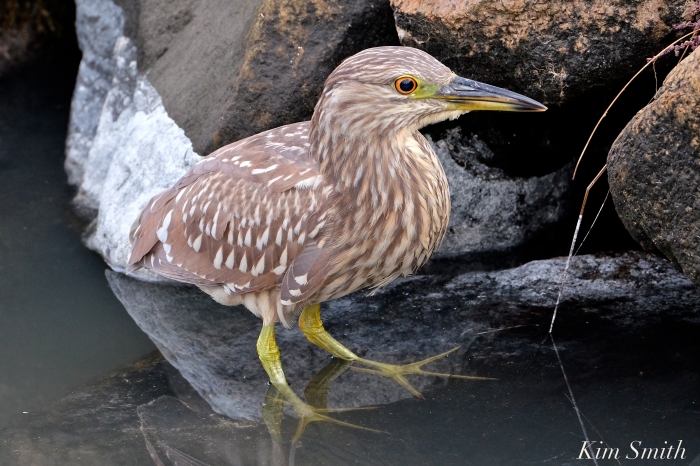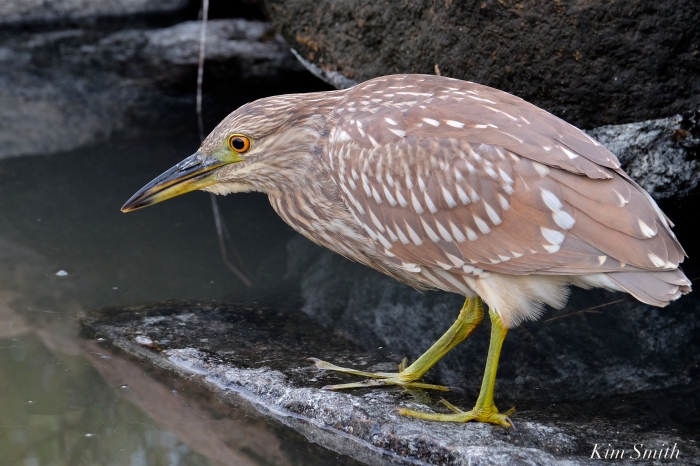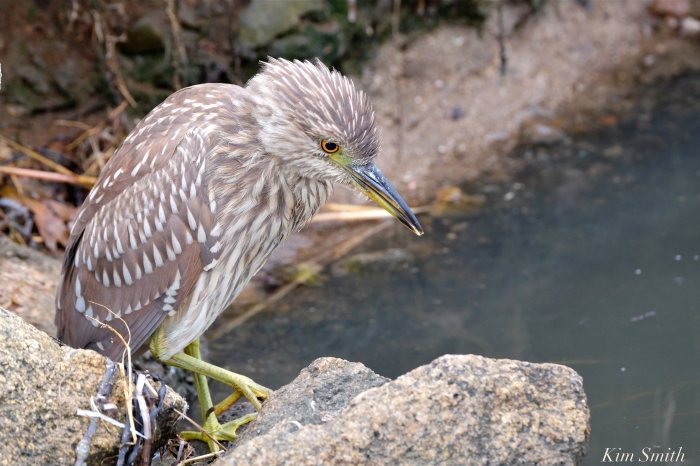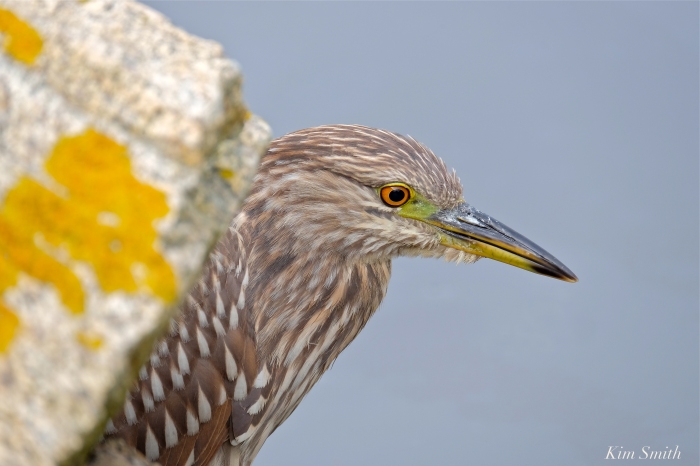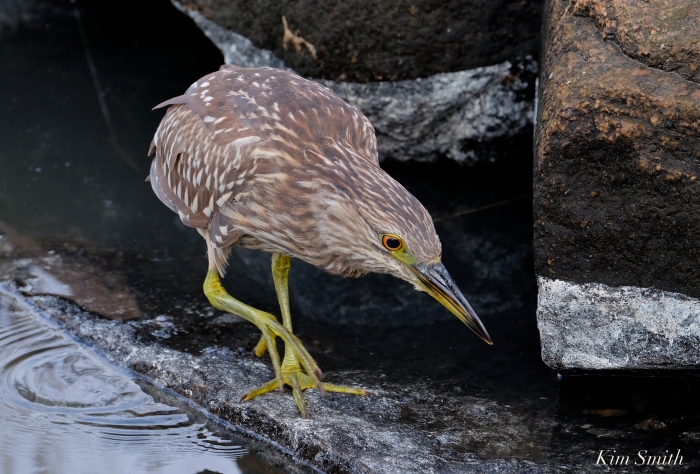 I so love chance encounters with wild creatures and this young Black-crowned Night heron did not disappoint. He stayed close to the rocky embankment, stealthily foraging for small shrimp in the dark crevices at mid-tide. The youngster did not seem to mind my presence; after a bit of time passed I walked away and when I returned he continued to steadily fish.
I so love chance encounters with wild creatures and this young Black-crowned Night heron did not disappoint. He stayed close to the rocky embankment, stealthily foraging for small shrimp in the dark crevices at mid-tide. The youngster did not seem to mind my presence; after a bit of time passed I walked away and when I returned he continued to steadily fish.

Scratching, preening, wing-stretches, and standing on one leg.
Eventually stopping to preen, stand on one leg, and then, walking aways from where he was feeding–how do I say this politely–took a huge enormous poop. Off he then flew to the marsh with a signature quark.
Black-crowned Nigh Herons are making a comeback in our region for several reasons, most notably because the pesticide DDT was banned and because the quality of our water has improved. During the 1950s, folks who did not care for midnight quarks coming from Black-crowned Night Heron nests either shot them dead out of trees or dynamited the rookeries.
 This past spring there were the most Black-crowned Night Herons I have ever seen in one tree at Niles Pond. If I recall correctly, there were nine in all!
This past spring there were the most Black-crowned Night Herons I have ever seen in one tree at Niles Pond. If I recall correctly, there were nine in all! 
Mature Black-crowned Night Heron, Niles Pond
The Black-crowned Night Herons proper name (Nycticorax nycticorax) translated from Ancient Greek is Night Raven, suggesting its nocturnal feeding habits. I like to refer to them as the onomatopoeic Quarky birds and unknown to me, until I began writing this post, in the Falkland Islands, the bird is called Quark.
https://www.instagram.com/p/BZ9Bur2FUZdRvZlTvxupUu32ARkTWgOiwL3rgo0/
 Off to the marsh.
Off to the marsh.
Spread The GMG Love By Sharing With These Buttons:

 Black-crowned Night Herons, adults, Gloucester, in early spring and summer
Black-crowned Night Herons, adults, Gloucester, in early spring and summer

